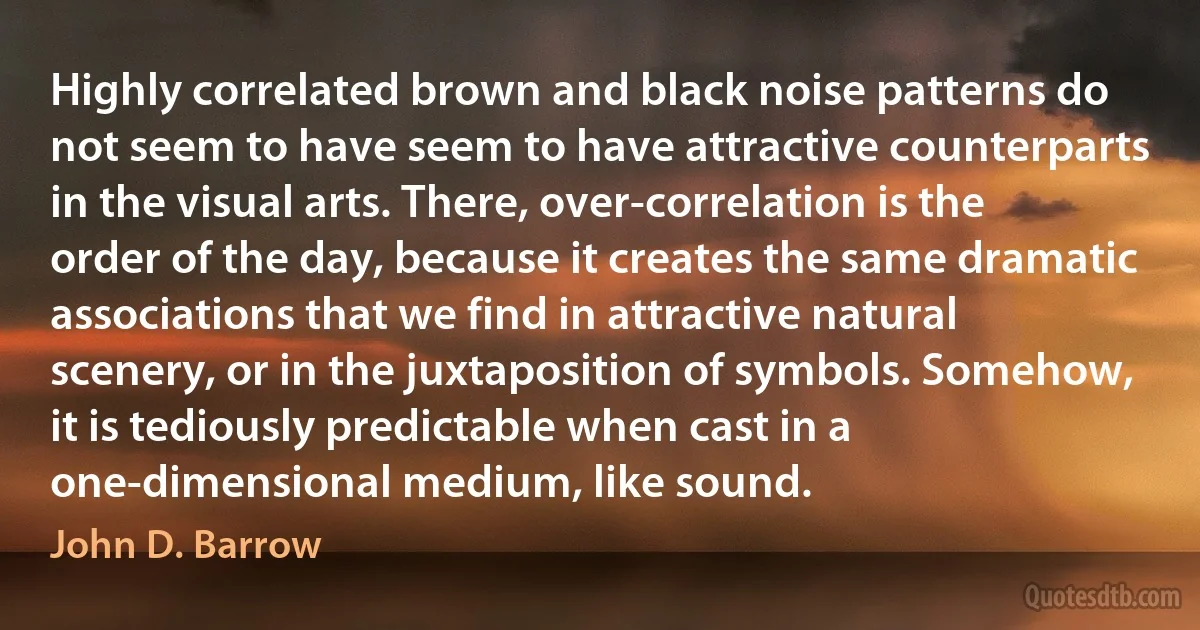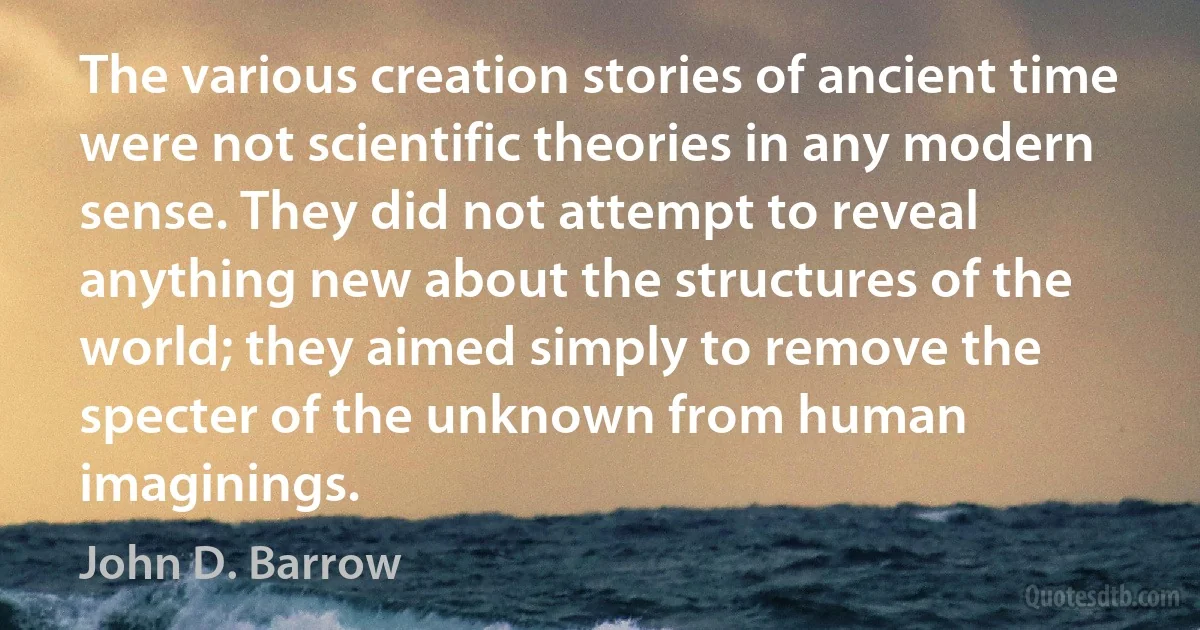John D. Barrow quotes - page 2
Assuming the simulators, or at least the early generations of them, have a very advanced knowledge of the laws of Nature, it's likely that they would still have incomplete knowledge of them. ...gradually the little flaws will begin to build up. ...The only escape is if their creatures intervene to patch up the problems one by one as they arise.

John D. Barrow
The Indian religious traditions... accepted the concept of non-being on an equal footing with that of being. Like many other Eastern religions, the Indian culture regarded Nothing as a state from which one might have come and to which one might return.. Where Western religious traditions sought to flee from nothingness... a state of non-being was something to be actively sought by Buddhist and Hindus in order to achieve Nirvana: oneness with the Cosmos.

John D. Barrow
Hundreds of years ago, natural theologians tried to impress their readers with stories of the wondrous symmetries of Nature; now we see that, ironically, it is the departures from those symmetries that makes life possible. It is upon the flaws of Nature, not the laws of Nature, that the possibility of our existence hinges. ...The laws and constants of Nature are features that enforce uniformity and simplicity, while initial conditions and symmetry breakings permit complexity and diversity.

John D. Barrow
If musical appreciation is a by-product of a more general pattern-processing propensity of the brain, then why are our senses heightened by pink noises? It is significant that the world around us is full of variations with 1/f spectra. Benoit Mandelbrot has pioneered the study of natural and computer-generated patterns that are scale-free. (He calls them fractals...) Mandelbrot draws attention to the fact that there is a pattern to the noise spectrum displayed by the human nervous system. At the extremities of the body... it tends to be of white-noise form; but, as one approaches closer to the central nervous system and the brain, these variations become 1/f-like. Our nervous system may act as a spectral filter to prevent the brain from being swamped with uninteresting white background noise about the world...

John D. Barrow
...logical contradictions will inevitably arise and the laws of the simulations will appear to break down now and again. The inhabitants of the simulation-especially the simulated scientists-will occasionally be puzzled by the experimental results they obtain. The simulated astronomers, might, for instance, make observations that show that their so-called constants of Nature are very slowly changing.

John D. Barrow
Images and pictures... have played a key role in shaping our scientific picture of the world. ...Carefully constructed families of pictures can act as a calculus all their own. Like any successful systems of symbols, with an appropriate grammar they enlarge the number of things that we can do without consciously thinking.

John D. Barrow
What Hubble discovered was the expansion of the universe.... We are not expanding. Nor is Brooklyn. Nor is earth. Nor is the solar system. Nor, in fact, is the Milky Way galaxy. Nor even those aggregates of thousands of galaxies that we call "galaxy clusters." These collections of matter are bound together by chemical and gravitational forces between their constituents-forces that are stronger than the force of expansion.

John D. Barrow
Gods reappear in unlimited numbers in the guise of the simulators who have the power of life and death over the simulated realities that they bring into being. The simulators determine the laws, and can change the laws, that govern their worlds. They can engineer anthropic fine-tunings. They can pull the plug on the simulation at any moment, intervene or distance themselves from their simulation; watch as the simulated creatures argue about whether there is a god who controls or intervenes, work miracles or impose their ethical principles upon the simulated reality.

John D. Barrow
Aristotle believed that the world did not come into being at some time in the past; it had always existed and it would always exist, unchanged in essence for ever. He placed a high premium on symmetry and believed that the sphere was the most perfect of all shapes. Hence the universe must be spherical. ...An important feature of the spherical shape... was the fact that when a sphere rotates it does not cut into empty space where there is no matter and it leaves no empty space behind. ...A vacuum was impossible. It could no more exist than an infinite physical quantity. ...Circular motion was the most perfect and natural movement of all.

John D. Barrow



